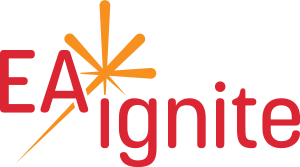Happy Admin Month! Take a look at what’s in store ›
Organization Strategies for Balancing Multiple Bosses
March 3, 2025

Supporting one executive is challenging enough, but supporting multiple executives requires precision, strategy, and proactive communication. Without coordination, priorities clash, messages get lost, and productivity suffers.
Executive assistants (EAs) are the critical link that keeps leadership aligned. Through structured communication, time management, and conflict resolution, they create order, prevent misalignment, and allow leadership to function efficiently.
This isn’t just behind-the-scenes support; it’s a strategic function that strengthens the office of the CEO and positions EAs as high-impact leaders. Here’s how to bring structure, streamline workflows, and drive executive alignment.
Strategies to Align Executives and Priorities
Create a Unified Priority Framework
When supporting multiple executives, work must align with company-wide objectives, not just individual requests. Without a structured system, urgent tasks take over, and strategic initiatives fall through the cracks.
How to Unify Priorities:
Establish a tiered priority system (urgent, important, deferrable) to assess competing requests
Conduct weekly check-ins with each executive to realign shifting priorities
Use a shared task tracker to visualize overlapping deadlines and avoid last-minute conflicts
In Action: An EA supporting a CFO and CMO notices that financial reporting deadlines conflict with a product launch. To prevent issues, they create a shared priority tracker and facilitate a discussion to align key deliverables.
Best Practice: Weekly check-ins reinforce alignment and allow for adjustments as priorities shift.
Standardize Communication Across Executives
EAs serve as the communication hub between executives, teams, and stakeholders. Without a consistent system, messaging becomes fragmented, leading to confusion and delays.
How to Streamline Communication:
Create standardized executive briefings for consistent messaging
Adapt to each executive’s preferred communication method, whether email, Slack, or meetings
Set clear response expectations to prevent bottlenecks
In Action: An EA supporting three global executives introduces a daily executive digest, summarizing key meetings, priorities, and action items. This eliminates redundant status requests and keeps leadership aligned.
Best Practice: Use collaboration tools like Asana or Microsoft Teams to centralize updates and reduce miscommunication.
Mediate Conflicts Diplomatically
Executives often have competing priorities, and unresolved conflicts slow decision-making. EAs must facilitate alignment and collaboration to keep teams running smoothly.
How to Resolve Conflicts:
Flag conflicts early and propose actionable solutions
Encourage cross-functional discussions to align priorities
Handle sensitive information with discretion to maintain trust
In Action: An EA notices that the COO and CTO are pulling resources for competiting projects. Instead of escalating the issue, they organize a joint leadership meeting to clarify shared goals and adjust timelines.
Best Practice: Develop a conflict resolution framework to navigate competing priorities professionally.
Optimize Workflow and Executive Support Systems
Managing multiple leaders requires structured systems that streamline operations, anticipate needs, and eliminate inefficiencies.
How to Build Seamless Support Systems:
Use AI tools to automate scheduling, email management, and task delegation
Build executive dashboards for real-time visibility into priorities
Identify recurring challenges and implement preemptive solutions
In Action: An EA at a Fortune 500 company builds a centralized leadership hub where executives can access shared calendars, project roadmaps, and key documents. This reduces unnecessary back-and-forth and keeps leadership focused.
Best Practice: Conduct a quarterly workflow audit to refine systems and improve efficiency.
Elevate Your Executive Support Skills
Refining these strategies enhances executive effectiveness and establishes EAs as indispensable strategic partners.
If you're looking to level up even futher, consider our course, How to Build the Office of the CEO and Become an Elite Chief of Staff.
This Course Includes:
Four recorded sessions on advanced executive support strategies
Five bonus resources, including a 75+ page Chief of Staff handbook
A course certificate to showcase your expertise
Join the Conversation
Welcome to the ASAP Circle, a community platform for peer-to-peer conversation on trending topics, professional challenges, and shared experiences. We even have designated spaces for weekly Tuesday Coffee Breaks.




.jpg.medium-square.800x800.jpg)




